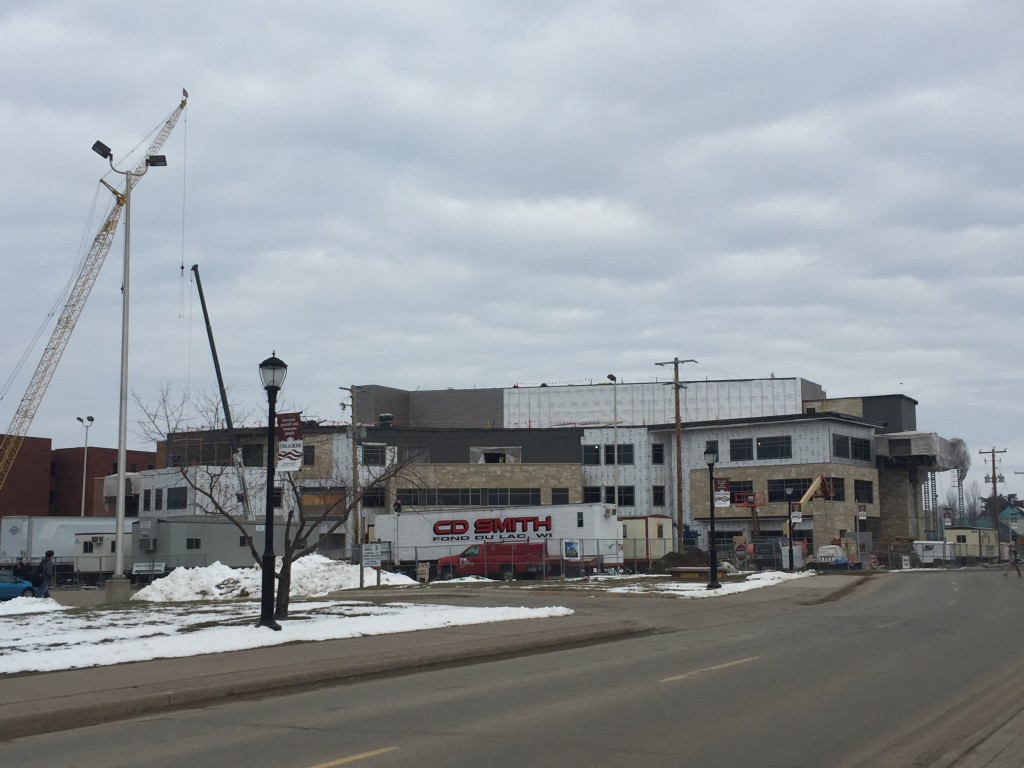Over the last four years, I have been a part of the planning and designing committee for a new student union. Over this journey, I have learned many things when it comes to building a new structure and that the process can be very complicated and messy. If you ever get the opportunity to be a part of the planning process for a new venue, do it. It will be an experience you may hate at times, but it is rewarding. It has been a great learning experience.
The planning process for a new student union vs. a single venue is much more dynamic. The planning team has to think of everything that might be utilized in multiple spaces, how the venues can share the tech, and which venue has priority. On top of that, you have to consider the needs of the bookstore and meeting rooms. How the dining area will serve and seat several hundred students each day. Even down to what kind of toilet paper will fit in the dispensers. Then there is the staff, what will they do every day and how will their jobs change. It is a dynamic process that takes hundreds of people to work through to create a successful final product.
 When I first started working on this endeavor, I was asked many questions that I did not have the answers for. Things like what should the budget be for the technology side of the project? What is the timeline to purchase items? What do you need? What do you want? Do you really need that much money? And so much more.
When I first started working on this endeavor, I was asked many questions that I did not have the answers for. Things like what should the budget be for the technology side of the project? What is the timeline to purchase items? What do you need? What do you want? Do you really need that much money? And so much more.
Here are some of the things I have learned so far in case you ever get involved in a project like this. In my list below I’m assuming the project is geared toward having performances as well as many other functions.
Try to set aside at least 5% of the total budget for technology. Even that may be too low; it does vary with what the purpose and philosophy of the building are going to be. For instance, if a building project is $55 million, you should work toward having $2.75 million to go towards tech. Writing that looks like a lot of money, but it gets eaten up quickly with a building that is tasked to have top-notch meeting technology for 13 rooms, digital signage, a full functioning multipurpose room, entertainment café, movie theatre, and outdoor venue.
If you can, buy ahead. Get to know when sales are and buy items that won’t go out of date or aren’t specific to an install. Things like microphones, stands, and cables can be used in any venue. Getting some of those smaller items off the list could allow for more money to get the bigger things you need.
If you can secure your budget, get it locked in. Do what you can to ensure that funding for the technology and production equipment is not left to chance. Not securing your budget will throw off your entire timeline and can cause a lot of stress. Having to wait until later to see if the money is there will only cause you frustration and worry. You will be in an uncomfortable position of wondering if you can get everything you need in time; let alone getting some training time on it before the first event.
Plan ahead, make decisions, and read everything they give you. Once the project starts to turn into brick and mortar, there is no slowing it down or making huge changes. Plan ahead by looking at the project in detail before the groundwork is even started. Be prepared to make tough decisions. These decisions will help keep a clear path for the unknowns that will occur and helps solidify the timeline.
Read everything that is given to you when you get it. You will receive project books or bibles; these books contain all of the details of the entire project. With so many specialties and workforces coming together, it is the architect’s job to get everyone on the same page. Read them, all of them, each edition. These books are the key to the entire project, saving everyone from answering the same questions over and over again. Educate yourself, bring the issues you find to the entire group for discussion, and then make a decision on how to proceed.

Work to set a timeline. I advise working with a professional audio salesperson, that orders equipment all the time. They can help establish a schedule for ordering the various parts of equipment that will be needed. Use that professional to help you determine all of your technology options too. Determine which items have a firm timeline and others that can shift slightly. A schedule for a building project is at the mercy of many parts and pieces coming together at once. Figure out what must happen at each stage in the process. With this timeline, you can determine when the start and the completion dates must occur. For instance, with my project, getting the right amount of power in the right places has been a big deal. Keeping track of that timetable allows for you to check-in and make sure it is being done the way it was ordered. If you see something not going right, work through your chain of command to get it fixed before it’s too late.
Balance persistence and patience. It is ok to be persistent about things that can only be done once, but you will need to balance being patient as well. Always put changes in writing, ask to see the changes, and keep track of the progress. Bear in mind that there are hundreds of people working on this project and sometimes your stuff will get set on the back burner while other items are worked out. However, as technology is a vital part of any venue, don’t let it idle too long before it gets lost in the crowd.
These are just five of many things I have learned so far. The new student union is set to open in January 2017 – Watch for more updates as my staff and I prepare to move into the space.
